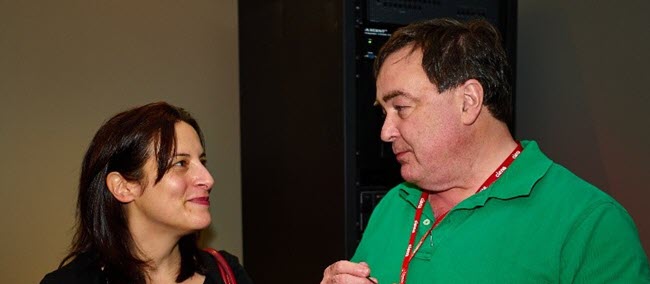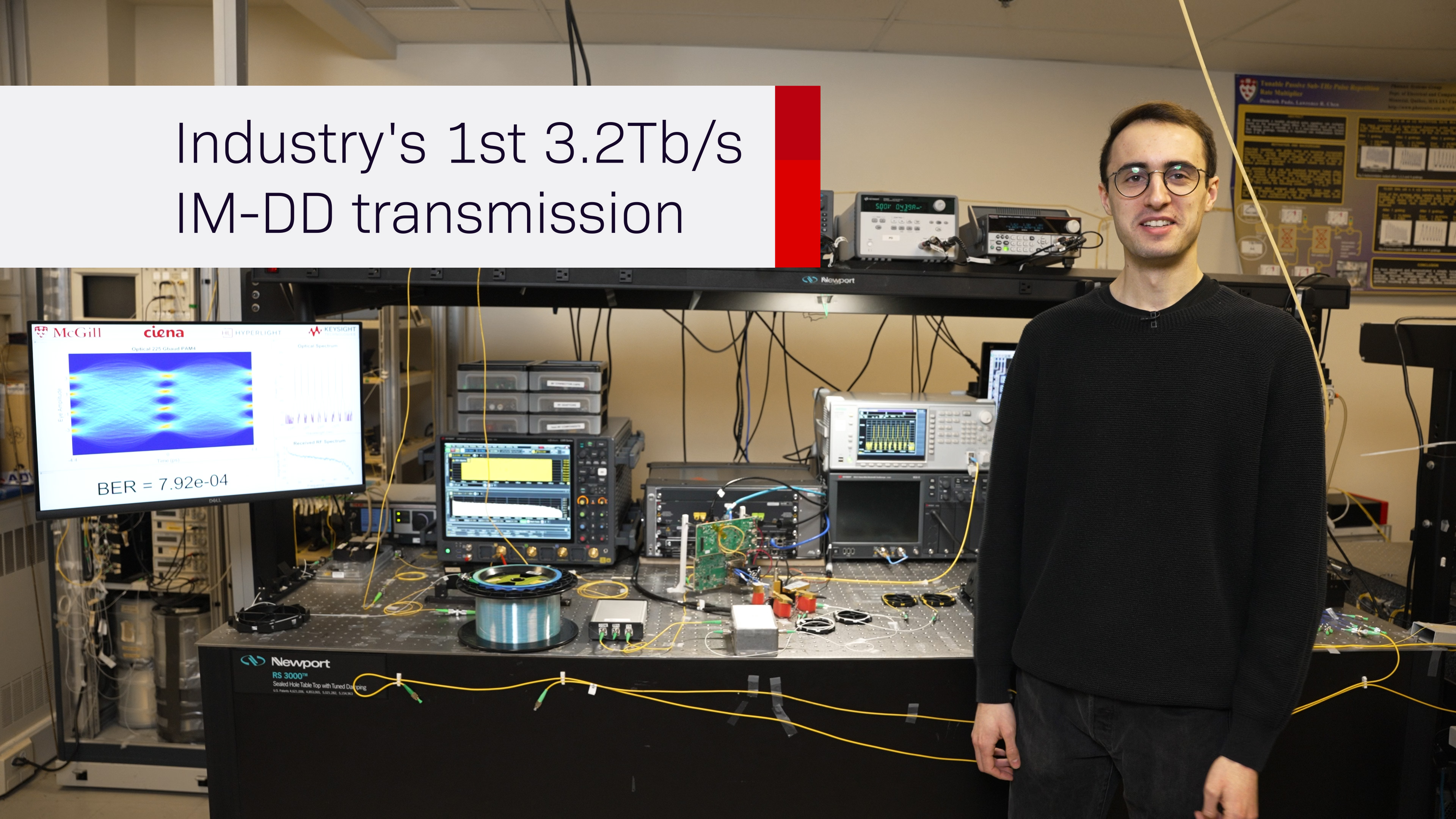The implications behind service and content provider requirements for coherent optical solutions
In 2007, I was asked to write a white paper about this really cool new “coherent technology” our team was working on and explain how the coherent receiver would completely revolutionize optical networks as we knew them. As I tried to get started, I quickly learned that the only source for content were the engineers actually working on the project – my efforts of scrolling through pages upon Google search pages netted zero information.
In the end, I wrote the paper by transcribing what a dear co-worker and mentor, Michel Belanger, who was one of the designers, patiently explained to me (it took several hours). He made sure I understood the significance of coherent technology and how it would change the game in optical networks.

Helen Xenos and Michel Belanger spent many hours working together to explain the exciting new capabilities of coherent technology
Fast forward a dozen years – there is no shortage of information pertaining to coherent technology, and there are about a dozen coherent module and system suppliers. Coherent optical systems have become the networking foundation that underpins the digital economy that we know today. Network providers are ubiquitously deploying coherent to scale networks for capacity, reduce transport costs and provide a better end-user experience to their customers. In fact, they are now looking at expanding the role that coherent technology plays in the network and deploy it in space and power/optimized applications in addition to traditional infrastructure, submarine and data center interconnect (DCI) build-outs.
As coherent technology plays an increasingly critical role for successful network evolution, we must step back and ask ourselves:
- What do network providers need from their coherent solution partners to succeed?
- What are the implications of the divergent customer and networking requirements to the suppliers of the technology?
No longer is it just about providing the right technology today (which obviously is critical), but it is also about where you can take a network provider tomorrow. To do this, here are five critical requirements network providers need and what it means for today’s coherent solution suppliers:
Requirement #1: Innovation
Network providers require industry-leading technology to achieve optimal system performance, which in turn results in tangible economic benefits and improved profitability.
Vendor implication: Ownership of DSP has become more important

- Many of the system performance benefits (such as spectral efficiency) come from coherent DSP and high-speed analog implementation unique to each vendor. These include a faster signal processing rate (higher baud), soft-decision forward error correction, constellation shaping, and other algorithms that compensate for linear and nonlinear impairments on the fiber.
- To provide this value, suppliers need to own the DSP, including the high-speed converters, and have both the systems and technical expertise to deliver an optimal design. Leveraging the latest CMOS technology node is also important, as it allows for the integration of more functions in smaller footprint and lower power solutions.
- However, there are significant financial as well as technical implications with developing coherent solutions using the newest technologies. State-of the-art semiconductor design today is 7nm CMOS. Coherent optical chips developed in this process node will benefit from higher transistor density and lower power dissipation compared to the previous node. At the same time, design implementation of chips starts to become significantly more challenging, and chip development costs significantly increase versus previous generations. Few suppliers will be able to afford the investment required to support the required pace of innovation.
Requirement #2: Lowest cost and power per bit
Network providers expect to gain continual reduction in cost and power per bit with each successive generation of coherent technology.
Vendor implication: Investments in selective vertical integration

- In addition to implementing the latest CMOS process, miniaturization of high-speed electro-optic components plays a big part in providing lower cost/power and is a critical element in enabling coherent solutions in pluggable form factors.
- Coherent suppliers need to own this technology to offer an optimized design, control time-to-market, maintain security of supply, and eliminate costs ensued from margin stacking.
- This is why vertical integration is becoming an increasingly common trend for coherent technology in the industry today.
Requirement #3: Openness and choice
In contrast to the requirement for optimal performance, network providers want standard operating modes implemented for specific applications where they want to deploy interworking coherent pluggables and improve security of supply.
Vendor implication: Designing for interoperability

- To design these solutions, coherent suppliers must collaborate in standards bodies and working groups to define appropriate specifications with enough disclosure of the implementation details to allow for fair participation among multiple vendors.
Requirement #4: Diverse coherent solutions
Network providers want to benefit from the higher capacity gains of coherent technology across an expanded set of applications. The technical requirements of the coherent solution will differ depending on the application.
Vendor implication: Develop multiple, application-specific designs

- Coherent solution suppliers need to select which type of application they will strategically invest in or, alternatively, have the requisite technical and financial resources to support multiple parallel investment streams to support the full range of applications.
Requirement #5: Accelerated cadence of new solutions
In today’s fast-paced economy, network providers are accelerating their adoption of new technologies to gain economic advantages and maximize their profitability.
Vendor implication: Financial strength and resource expertise

- The implication for coherent suppliers is that they must have both the technical and financial resources to continue to drive and deliver innovation, as well as quickly ramp in volume, at the pace that network providers need.
What does this mean for network providers? While coherent technology is becoming more critical in achieving the right cost and profitability structures, choosing the right partner to fulfill coherent solution requirements is becoming increasingly challenging and multi-dimensional.
What does this mean for Ciena? Thanks to our heritage, it’s just another day at the office. This is what we do.
This blog is in honor of our dear colleague Michel Belanger - key industry influencer, troublemaker, mentor and friend, who is greatly missed.






